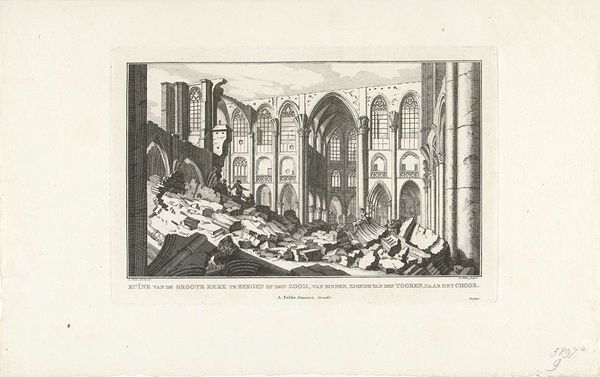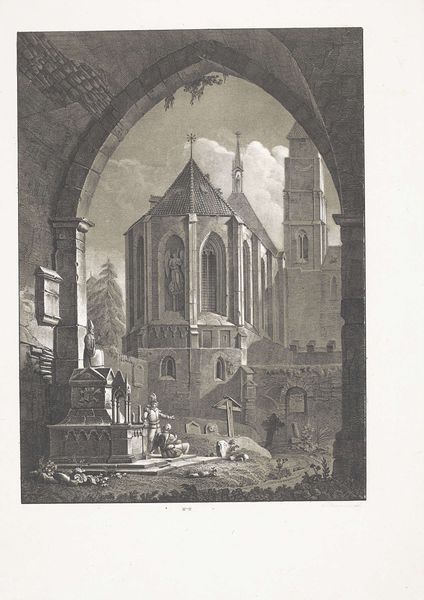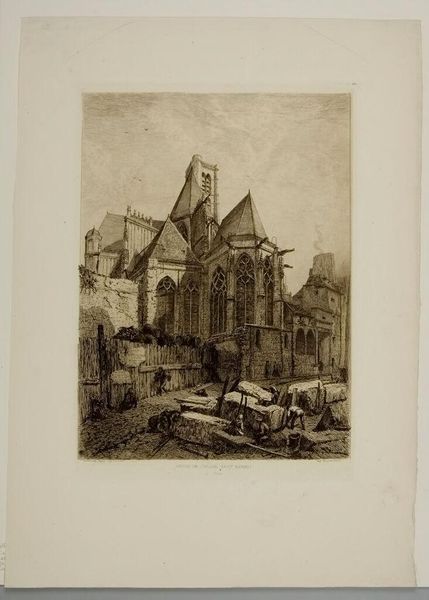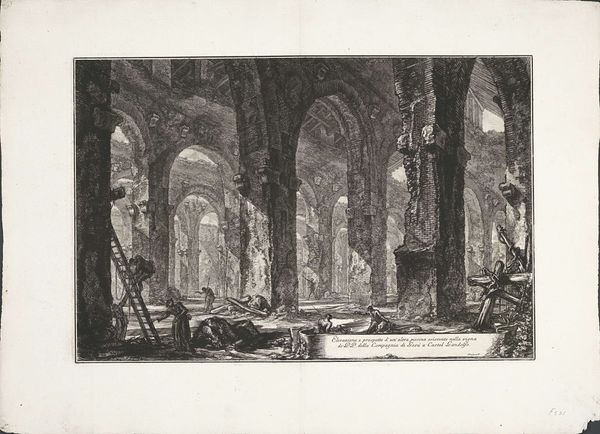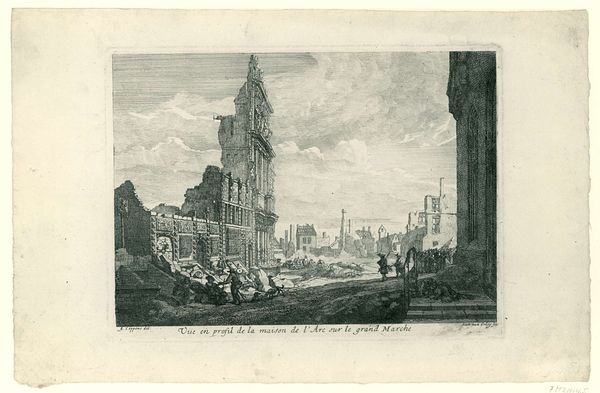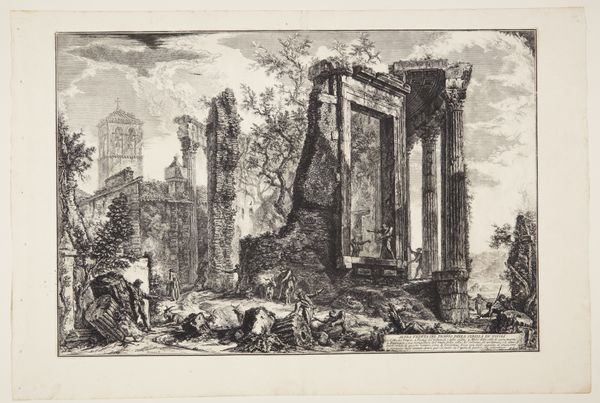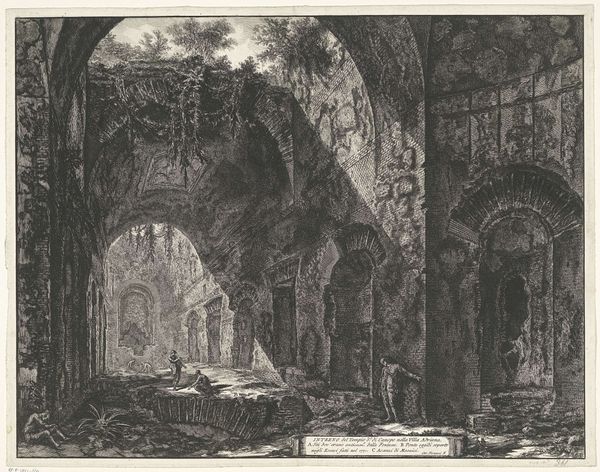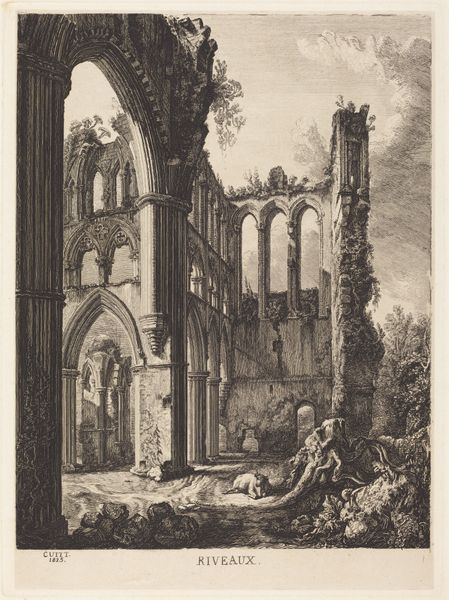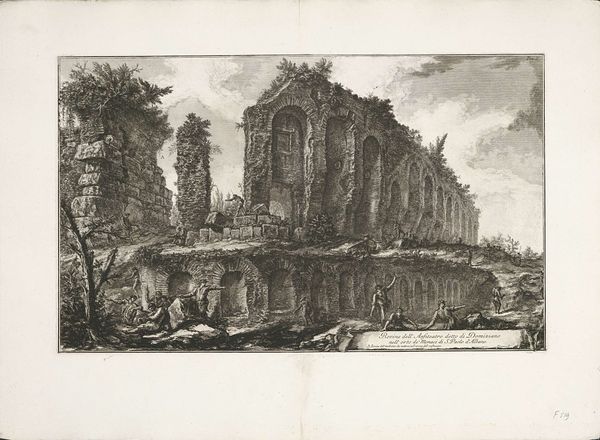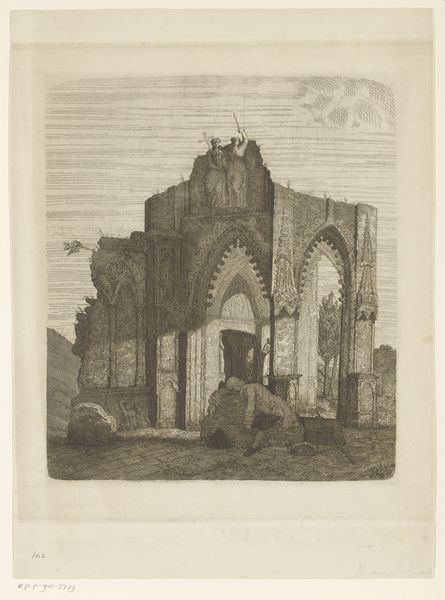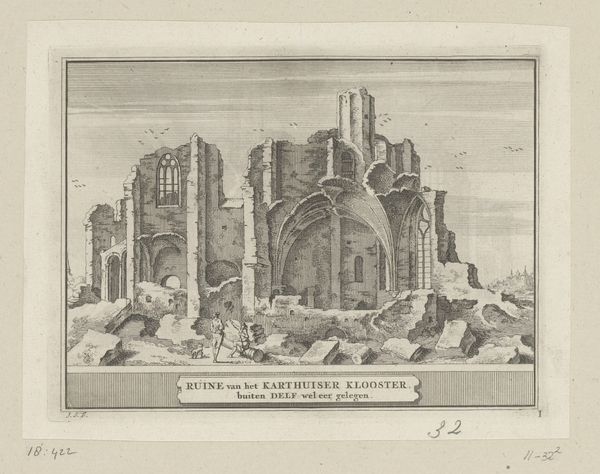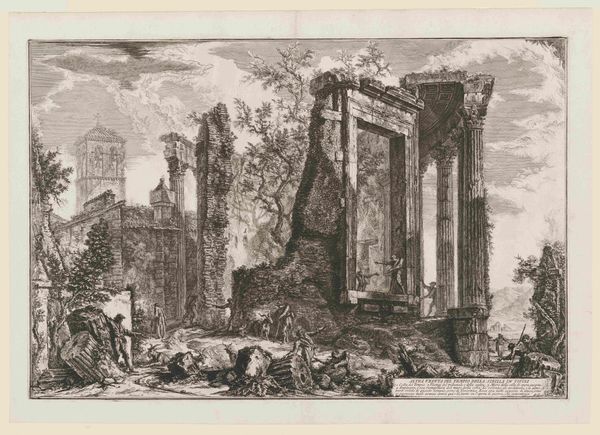
Dimensions: height 179 mm, width 270 mm
Copyright: Rijks Museum: Open Domain
In 1748, Simon Fokke made this print of the Ruïne van de Grote Kerk van Bergen op Zoom. The technique used to create this image is etching, a printmaking process that relies on the controlled corrosion of metal. Here, Fokke would have coated a metal plate with a waxy, acid-resistant substance known as a ground, before using a pointed tool to scratch away the ground, exposing the metal beneath. The plate was then immersed in acid, which bit into the exposed lines, creating grooves. Ink was then applied to the plate, filling these grooves, before the surface was wiped clean. Finally, the plate was pressed onto paper, transferring the ink and creating the print. The sharp, precise lines of the etching beautifully capture the stark reality of the church in ruins. The process allows for intricate details, and the contrast between the etched lines and the blank paper create a striking visual impact. But perhaps more importantly, we are reminded of the labour involved in the church's creation, and its violent destruction. With his etching, Fokke reminds us that even ruins are the products of intense making.
Comments
No comments
Be the first to comment and join the conversation on the ultimate creative platform.
